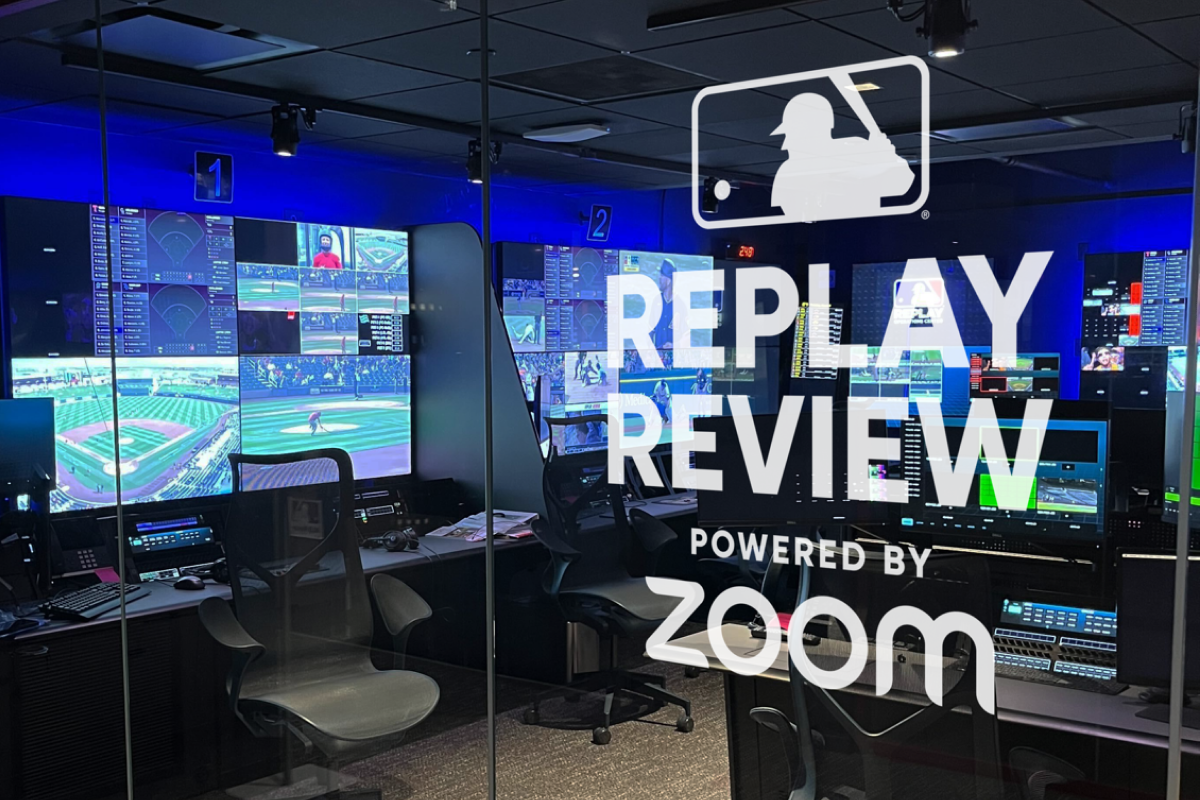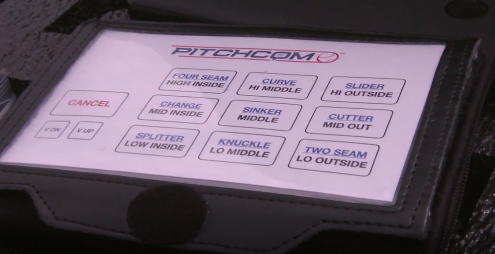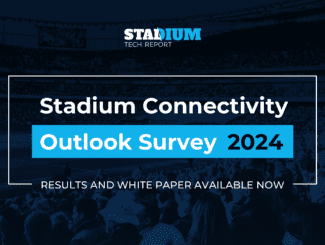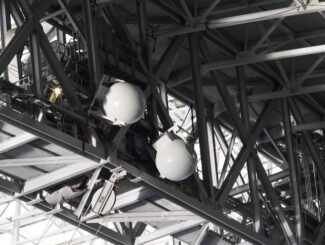
In part seeking to leverage the impacts of a trio of dramatic on-field rule changes for 2023, Major League Baseball is introducing a wide range of new ballpark-related technology.
As the league this season is looking to introduce substantially more on-field action and athleticism and reduce dead-time and average game lengths, MLB is banning extreme defensive shifts, implementing larger bases, and introducing a pitch clock, with each measure having first been tested in the minor leagues. During MLB’s Spring Training, those changes have combined to reduce average game times by 26 minutes.
To support those changes, MLB and several vendor and commercial partners have installed a series of new equipment at all 30 ballparks.
Zooming in on replays
Among the latest changes:
• The use of 12.9-inch iPad Pro tablets and Zoom video conferencing on-field to aid in replay reviews. The tablets will be connected via Zoom to MLB’s replay operations center in New York and will allow field umpires to see what replay is being viewed. Prior to this latest development, field umpires were connected to the replay operations center only by audio.
Zoom also has sponsorship rights to the replay operations center, and through that broader and newly developed relationship, the Zoom-based views into that facility will additionally be incorporated this season into MLB Network Showcase telecasts and Apple TV+ broadcasts of MLB games.
“Fans have been asking to look into the replay room, and we also think it’s going to be a positive for umpires on the field to be more closely connected with the umpires in the replay room,” said Chris Marinak, MLB chief operations and strategy officer.

• An expansion of PitchCom technology to allow pitchers to call pitches during games. PitchCom first was introduced in MLB play in 2022, enabling catchers to use a proprietary, push-button, and wearable electronic transmitter to communicate chosen pitches to pitchers and other players. The pitchers and other players receive the calls via speaker-based, wireless receivers embedded in their caps.
The system, advancing beyond more than a century of hand-signaling to call pitches, is designed to cut down on sign-stealing and help improve overall pace of play.
The latest iteration of PitchCom involves pitchers being able to wear transmitters either on their belt or the back of their glove.
Umps get gear to help with pitch clock
• Field umpires wearing haptic devices on their belt and/or wrist to aid in enforcement of the new pitch clock. The new pitch clock rules require no more than 15 seconds between pitches with the bases empty and more than 20 seconds with runners on. To help with consistent implementation of the pitch clock and enforcement on penalties on either pitchers or batters or non-compliance, umpires will wear the devices, developed in part by PitchCom and Reidel, providing the sensory feedback as the clock expires.
A Reidel belt pack enables the pitch clock notification, as well as communications with the replay center and on-field announcements. The PitchCom-developed ClockCom device, meanwhile, is a watch-like device allowing for notification of expiration of the pitch clock.
“These measures are going to be really important to administer the [pitch clock] system and allow for clean enforcement of these rules,” said Morgan Sword, MLB executive vice president of baseball operations.
Additionally, new pitch clocks have been installed near the batter’s eye at every MLB ballpark, as well as behind home plate, to aid players and umpires.
More upgrades for Statcast
• Building upon MLB’s long-running and highly influential Statcast player and pitch tracking, the league has upgraded Sony Hawk-Eye cameras at every ballpark to enable new bat tracking. That level of tracking will measure bat speed and attack angle, and enable a wide range of new insights about how batter swing paths correspond to at-bat outcomes. That data will both be used in scouting by players and teams and for consumer-facing applications such as the MLB mobile app, MLB.TV, and in linear game broadcasts.
Each ballpark has a 12-camera system enabling its Statcast system, and five of the 12 cameras at each facility have been upgraded from 100 frames per second (fps) to 300 fps to help support the bat tracking.
The on-field, in-game system covering the entire league and the deployment of the high-frame rate cameras builds substantially on other bat-tracking technology that heretofore has been limited to practice settings or other, more limited measures.
Prior testing of the bat-tracking technology at Dodger Stadium and Minute Maid Park, the homes of the Los Angeles Dodgers and Houston Astros, respectively, has now been expanded across the league for the 2023 season.
“All these things that we’ve done in Statcast – every time we add a new capability or feature – it’s really about storytelling,” Marinak said. “And we work with our broadcast partners to bring these stories to life on the air with some of our visualizations.” • Dugout-based use of iPads by MLB players and coaches for scouting and analysis has been further expanded for 2023 to allow for annotation and screen illustrations within in-game video. The annotations can be saved for viewing later in games still in progress and uploaded or review and analysis after games.

Eric Fisher is a freelance writer based in New Jersey. He has covered the sports industry for nearly three decades, including prior editing and reporting roles with SportBusiness and Sports Business Journal. He is a proud graduate of St. Bonaventure University. This is his first article for Stadium Tech Report.







